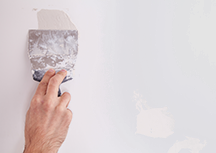With all the news about interest rates, housing sales, and forecasts, you might think that the real estate market is a bewildering place. In some ways, you’d be right! The market is certainly active. There’s a lot going on.
But, it would be a mistake to let all that noise discourage you from making a move. If the timing is right, and you’re ready to upsize or downsize - or simply move to a neighbourhood that better suits the lifestyle you want - you should at least get the information you need to make the best decision.
I can help.
As your real estate professional, I’m always available to help. I can fill you in on what’s happening in the local market, help you determine what kind of new home you are qualified to purchase, and give you a clear idea of the properties currently available.
You don’t have to try to figure this stuff out on your own!
Even if you’re just at the “thinking about it” stage, I recommend getting the information you need now. That way, you’ll be prepared to make the best decision when you’re ready.

When you put your property up for sale, you want to make sure that potential buyers get all the information they need on the features of your home and its surrounding area. If, for example, buyers don’t realize there is a great school just a couple of blocks away, they might cross your property off their shortlist.
An effective way to make sure something like that doesn’t happen is to create three lists.
Whatever you’ll miss, put it on the list! Chances are, those are features that will also interest buyers.

Say you’re trying to sell a used car. Imagine that it’s a desirable make and model, the mileage is low, and, overall, it’s in great condition…except, that is, for the body.
Unfortunately, there are a few areas where the paint is scratched, and there are a couple of dents and rust spots too.
Are you going to have trouble selling that car? Probably. Many potential buyers will have trouble seeing past the condition of the body and hence not appreciate the true value of the vehicle.
The same thing can happen when you’re trying to sell your home.
Everything about it could be wonderful, but if the paint on the walls is faded in spots, and there are dents, scuffs and holes, buyers may notice those things more than the other more important features of your property.
So, it’s a good idea to inspect your walls to make sure they look great.
There are numerous products available at your local home improvement centre for repairing gouges and holes. Fixing them is a relatively easy do-it-yourself job.
Household smells in our own homes can be a problem because we get accustomed to them. However, it takes just a few seconds in a stranger’s home, to know if a smoker lives there. The smell is in the air!
So, when you put your home on the market, think about the common smells you might have lingering in your home. Remember, you may no longer notice them, but a prospective buyer will.
These may include:
A diaper bin in the baby’s room.
Kitty litter.
Model-making glue.
Paints, even if the cans or tubes are closed tightly.
Food. The aroma of a spicy meal can linger for hours.
Garbage cans. Even empty ones, if they are not clean.
Strong smelling soaps, perfumes and other cosmetics and toiletries.
Flowers and other plants.
Firewood (especially pine.)
Outdoor shoes.
Ashtrays.
Sinks.
Carpets.
Door mats. These are especially prone to stains and smells.
Try to eliminate as many odours as possible. An hour or so before a viewing, open a few windows to give your home a breath of fresh air.

But, it would be a mistake to let all that noise discourage you from making a move. If the timing is right, and you’re ready to upsize or downsize - or simply move to a neighbourhood that better suits the lifestyle you want - you should at least get the information you need to make the best decision.
I can help.
As your real estate professional, I’m always available to help. I can fill you in on what’s happening in the local market, help you determine what kind of new home you are qualified to purchase, and give you a clear idea of the properties currently available.
You don’t have to try to figure this stuff out on your own!
Even if you’re just at the “thinking about it” stage, I recommend getting the information you need now. That way, you’ll be prepared to make the best decision when you’re ready.
Three Lists to Make When Selling Your Home

When you put your property up for sale, you want to make sure that potential buyers get all the information they need on the features of your home and its surrounding area. If, for example, buyers don’t realize there is a great school just a couple of blocks away, they might cross your property off their shortlist.
An effective way to make sure something like that doesn’t happen is to create three lists.
#1: The “I’ll miss it” list.
Chances are, there are things about your home that you’re really going to miss when you move. One of those may be the spacious living room that’s ideal for entertaining or the nearby park with scenic trails that are perfect for walking and biking.Whatever you’ll miss, put it on the list! Chances are, those are features that will also interest buyers.
#2: The “Just the facts” list.
What are the facts about your property that a buyer needs to know in order to consider purchasing it? This may be a very long list including such items as total square footage, number of bedrooms, number of bathrooms, property taxes, size of yard, and more.#3: The “repairs and improvements” list
. Buyers are interested in the state of repair of your home, and in any improvements you have made to it. On this list include all repairs you have done during the past three years and, if possible, attach receipts. It’s especially important to include anything that has been replaced, such as the furnace or roof shingles.Inspect Your Walls Before You Sell

Say you’re trying to sell a used car. Imagine that it’s a desirable make and model, the mileage is low, and, overall, it’s in great condition…except, that is, for the body.
Unfortunately, there are a few areas where the paint is scratched, and there are a couple of dents and rust spots too.
Are you going to have trouble selling that car? Probably. Many potential buyers will have trouble seeing past the condition of the body and hence not appreciate the true value of the vehicle.
The same thing can happen when you’re trying to sell your home.
Everything about it could be wonderful, but if the paint on the walls is faded in spots, and there are dents, scuffs and holes, buyers may notice those things more than the other more important features of your property.
So, it’s a good idea to inspect your walls to make sure they look great.
There are numerous products available at your local home improvement centre for repairing gouges and holes. Fixing them is a relatively easy do-it-yourself job.
Fresh Air Sells
So, when you put your home on the market, think about the common smells you might have lingering in your home. Remember, you may no longer notice them, but a prospective buyer will.
These may include:
A diaper bin in the baby’s room.
Kitty litter.
Model-making glue.
Paints, even if the cans or tubes are closed tightly.
Food. The aroma of a spicy meal can linger for hours.
Garbage cans. Even empty ones, if they are not clean.
Strong smelling soaps, perfumes and other cosmetics and toiletries.
Flowers and other plants.
Firewood (especially pine.)
Outdoor shoes.
Ashtrays.
Sinks.
Carpets.
Door mats. These are especially prone to stains and smells.
Try to eliminate as many odours as possible. An hour or so before a viewing, open a few windows to give your home a breath of fresh air.

